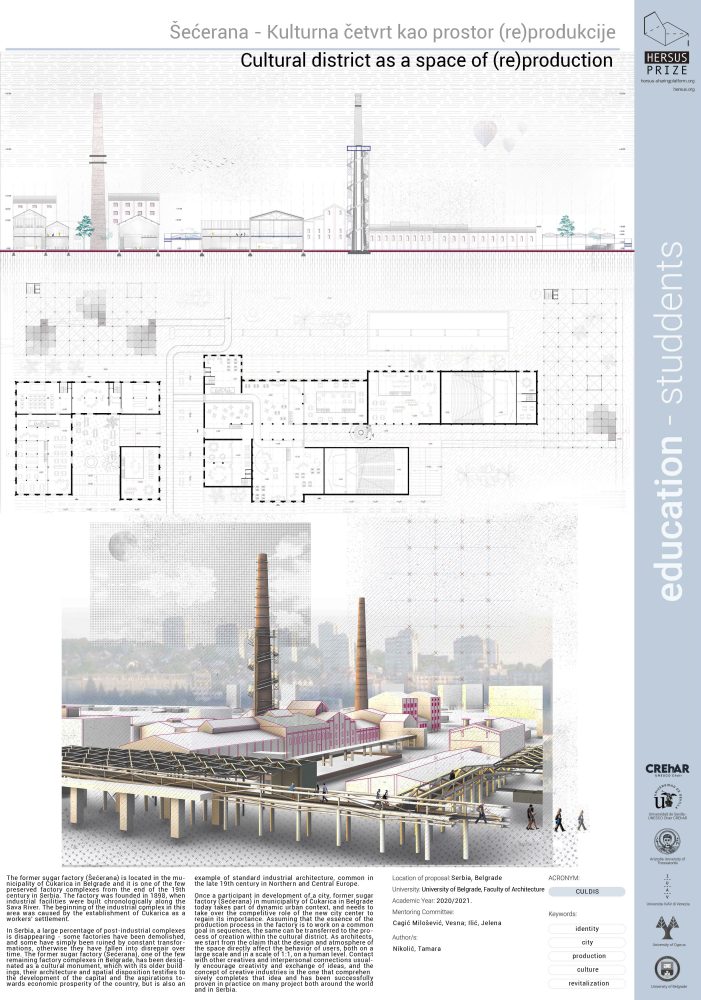Cultural district as a space of (re)production
Education - Students / Finalist

The former sugar factory (Secerana) is located in the municipality of Cukarica in Belgrade and it is one of the few preserved factory complexes from the end of the 19th century in Serbia. The factory was founded in 1898, when industrial facilities were built chronologically along the Sara River. The beginning of the industrial complex in this area was caused by the establishment of Cukarica as a workers’ settlement.
In Serbia, a large percentage of post-industrial complexes is disappearing – some factories have been demolished, and some have simply been ruined by constant transformations, otherwise they have fallen into disrepair over time. The former sugar factory (Secereana), one of the few remaining factory complexes in Belgrade, has been designated as a cultural monument, which with its older buildings, their architecture and spatial disposition testifies to the development of the capital and the aspirations towards economic prosperity of the country, but is also an example of standard industrial architecture, common in the late 19th century in Northern and Central Europe.
Once a participant in development of a city, former sugar factory (Secerana) in municipality of Cukarica in Belgrade today takes part of dynamic urban context, and needs to take over the competitive role of the new city center to regain its importance. Assuming that the essence of the production process in the factory is to work on a common goal in sequences, the same can be transferred to the process of creation within the cultural district. As architects, we start from the claim that the design and atmosphere of the space directly affect the behavior of users, both on a large scale and in a scale of 1:1, on a human level. Contact with other creative and interpersonal connections usually encourage creativity and echange of ideas, and the concept of creative industries is the one that comprehensively completes that idea and has been successfully proven in practice on many project both around the world and in Serbia.
Author: Tamara Nikolić